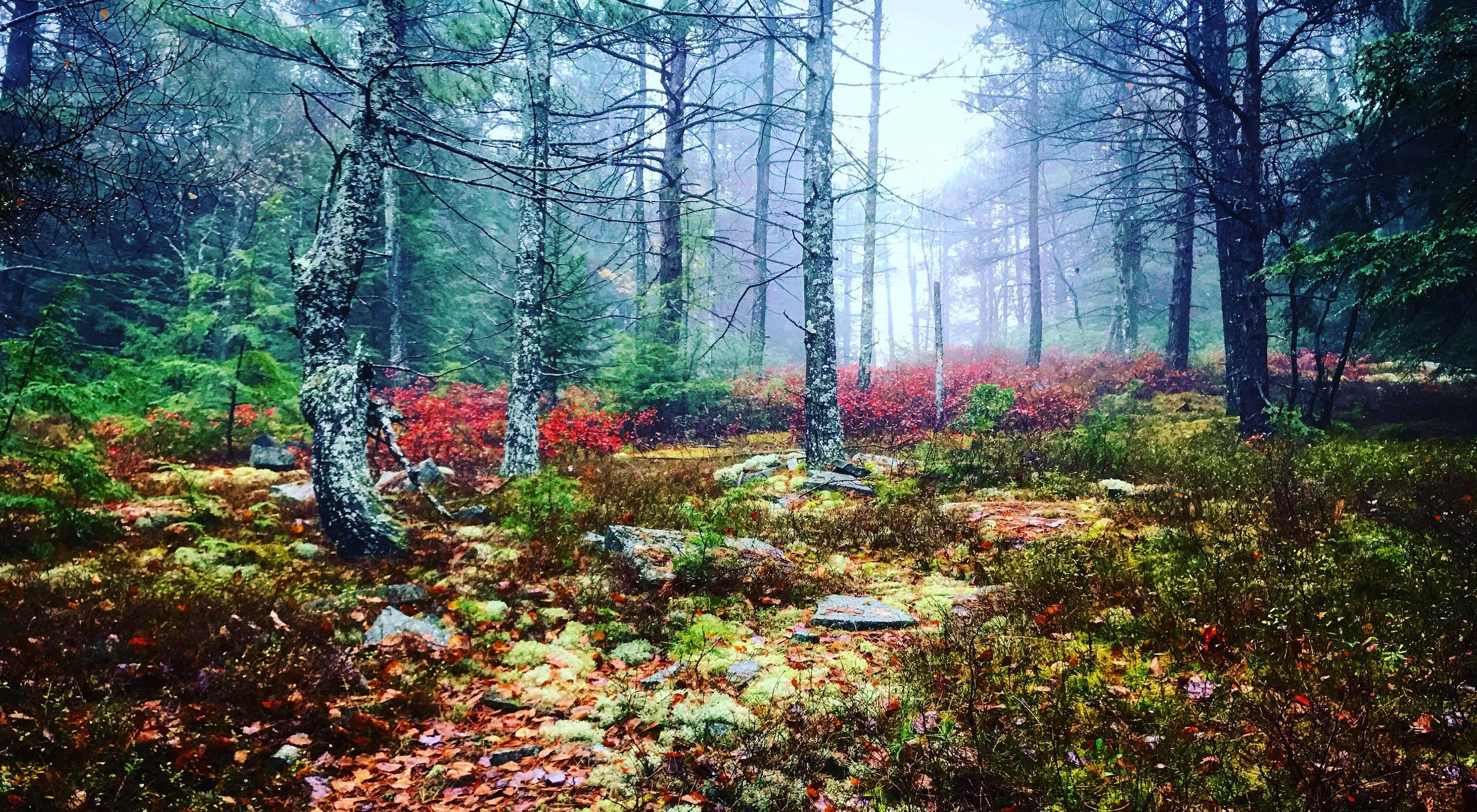The Nature Conservancy owns and manages 55 preserves throughout Vermont. As an AmeriCorps Field Assistant, I am responsible for helping maintain 18 of these preserves—a total of 16,000 acres. My favorite task of boundary marking allows me to intimately experience this special landscape and the very real threats it can face.
From fens to mountains, glacial ponds to clayplain forests, the Conservancy protects the most ecologically important and biodiverse land available. With a mission to “conserve the lands and waters on which all life depends”, it is imperative that we steward this land to the best of our ability. Boundary marking is important for clearly identifying our nature preserves to the public and protecting our land from practices that could jeopardize its ecological integrity. Monitoring preserves on a regular basis provides us with an opportunity to identify signs of trespass, logging, illegal harvesting of plants, or any other activity that might negatively affect the flora and fauna of the area.
Checking boundaries is also a great opportunity to put some of our most basic and primitive skills as humans to the test. Boundaries run for miles without rest and do so with a blatant disregard for harsh topography, water, or thick vegetation; they don’t care about being in cell phone service range, catching a nice view, or even leaving a trace of their presence. But run they must, straight as an arrow up and over mountains, through the woods, bogs, and fields. Our job is to chase these invisible lines and create proof of their existence using blue paint, flagging tape, and metal TNC signs.
One of the best days of marking this season was with fellow AmeriCorps member Rae Bronenkant at our Equinox Highlands Natural Area. Our plan was ambitious: Equinox had 10+ miles of dated boundaries that desperately needed attention and several of the lines went straight up and over Equinox and Mother Myrick Mountain. Although Rae is an accomplished backpacker, she had never formally marked boundaries and this was a unique opportunity for her to learn the entire process. For me, having an extra hand was invaluable for completing this endeavor in a timely manner.
We set forth on a clear November morning marked by blue skies, crunchy leaves, and youthful ambition for the challenge ahead. We parked our cars in two very different locations thus sealing our fate to hike the entire planned route. We prepared by examining the old survey maps over coffee and doughnuts to get sense of what to expect and where to find the old stone piles or iron rods that mark corners. Then after a quick tutorial on how to operate the GPS units, Rae led us to our first corner where we would begin checking the status of our boundaries. The red blazes were all but gone! Left unattended for another year or two and the markings would have been lost altogether. We quickly fell into an efficient rhythm of leapfrog as we danced along the steep slopes of Equinox, painting tree after tree.
As the day grew older, our task became more challenging. The boundary seemed to be more bashful with every step, and disappeared altogether for large sections. Finding the next marking put our observation and orienteering skills to the test. We trudged amidst mountainous piles of bear poop, thick patches of sharp spruce trees and the sky grew a foreboding gray. Our resolve was fueled by peanut butter and honey sandwiches as we progressed onward.
Our adventure culminated with one last ascent to the peak of Mother Myrick Mountain. At the summit, we were not treated to a spectacular view. Instead, we were rewarded with something much better--the first wintery blanket of snow. It was a special stewardship moment as we squinted into the white abyss, flecks of snow catching on our eyelashes. As the tiny frozen crystalline structures melted on our warm rosy cheeks, our deep connection to the lands and water upon which all life depends, was forever made stronger.
